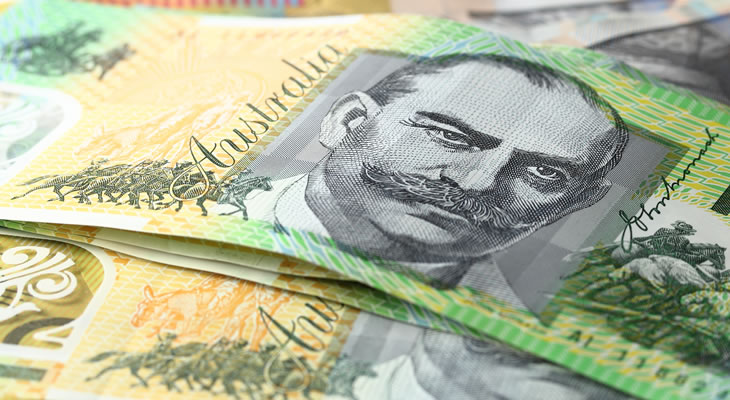Chinese Devaluation Triggers Downward Trend for Australian Dollar (AUD), GBP/AUD Exchange Rate Strongly Boosted
Once again developments from China have weighed down on the commodity currencies, with the ‘Aussie’ (AUD) dropping significantly against the majors as the People’s Bank of China (PBOC) depreciated the value of the Yuan (CHY), a move that took the markets by surprise. A lower than expected result for the NAB Business Confidence Index in the early hours only compounded the blow further. In response to this marked weakening of the antipodean currency the GBP/AUD pairing jumped to 2.1292, recouping almost all of the concessions the Pound (GBP) had made earlier in the week.
Earlier…
Negative numbers from China have dented the bullish run of the Australian Dollar (AUD) today, as Sterling (GBP) remains overshadowed by the lost prospect of a UK interest rate rise.
Visible Trade Balance not Good Enough to Prevent GBP/AUD Exchange Rate Slip as Australian Homes Loans Fell
A return to form for the ‘Aussie’ (AUD) began at the end of last week with an improved Australian Construction PMI, which rose to 47.1 over the previous month’s 46.4 to edge the sector closer to achieving a positive state of growth. However, quick on the heels of this comparatively positive data was the Home Loans figure for June, which fell short of expectations to increase by 4.4% rather than 5%. Although not too severe a disappointment this did nevertheless slightly dampen the sentiment around the ascendant Australian Dollar to give the GBP/AUD exchange rate a small boost to 2.1090.
Also released on Friday, the UK Visible Trade Balance demonstrated a 9.184 billion deficit, a decided increase but one that was also lower than had been anticipated. Slightly positive news for the Pound (GBP), this failed to have a particularly major impact, as the GBP/AUD pairing continued to trend generally down throughout the rest of the day to reach a fresh fortnightly low of 2.1048.
Chinese Contraction Evidenced by Imports, Exports and PPI, GBP/AUD Exchange Rate Benefits from Weakening of Commodity Currencies
Over the weekend the Chinese year-on-year Import and Export figures disappointed expectations, contracting by -8.1% and -8.3% respectively. The nation’s PPI also fell short of forecast, hitting -5.4% rather than -5.0%. Given the significant role that trade with China plays in the Australian economy this was something of a blow to the commodity currency, as the global commodity slowdown seems set to continue unabated for the near future. In consequence, the GBP/AUD exchange rate saw an upturn in outlook, returning today to trending steadily upwards.
Pound Sterling to Australian Dollar (GBP/AUD) Exchange Rate Forecast: Australian Interest Rate Comments May Prompt Increased Movement for the Pairing
The ‘Aussie’ could be experiencing another rally in the coming days, however, with the NAB Business Confidence Index and Westpac Consumer Confidence Index results due for release in the next two days. Any increase in optimism, for either businesses or consumers, would be highly beneficial to the currency, with the potential to send the pairing back down. Any indications towards the imminent future of interest rates, meanwhile, in Reserve Bank of Australia (RBA) Deputy Governor Philip Lowe’s speech on Wednesday are likely to be a further significant stimulus for movement.
For the UK, on the other hand, the Employment Change and Unemployment Rate for June may have the potential to trigger more hawkish trading trends. Improved employment conditions might provide the impetus needed to redeem Sterling in the eyes of investors and move the currency away from the continued dovish influence of the BoE announcements.
Current GBP, AUD Exchange Rates
Presently the Pound Sterling to Australian Dollar (GBP/AUD) exchange rate is trading bullishly at 2.1050, as the Australian Dollar to Pound Sterling (AUD/GBP) pairing is trending downwards around 0.4750.


Comments are closed.